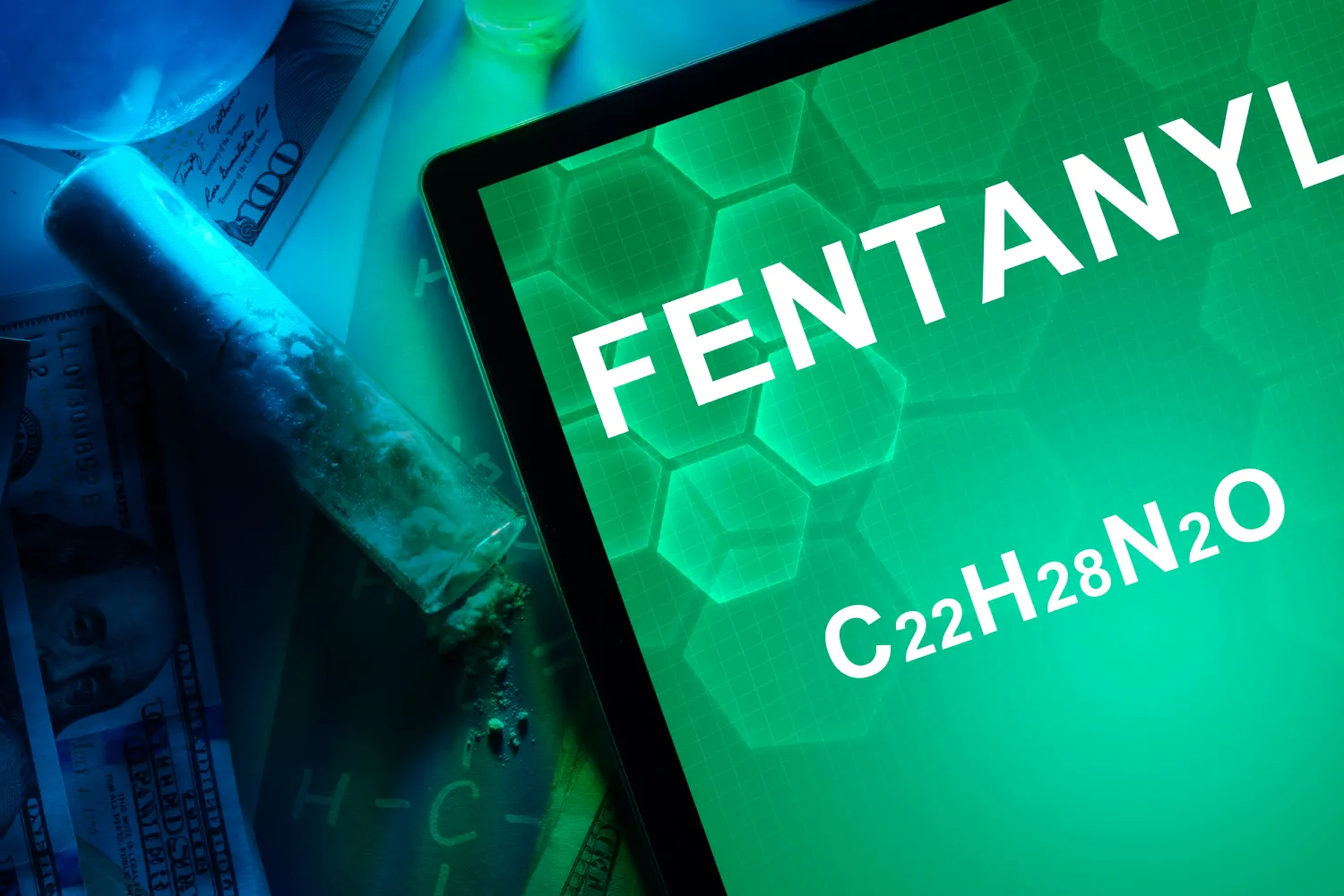If you’re like many people, you may have heard of fentanyl but may not be sure exactly what it does. Fentanyl is a powerful opioid painkiller that has become a significant concern due to its addictive nature and the devastating impact it can have on individuals and communities.
As addiction to fentanyl continues to rise, it’s important to understand not only the effects it can have on your body but also how long it can stay in your system.
What Is Fentanyl?
Fentanyl is classified as an opioid analgesic and is typically prescribed to people who are experiencing severe pain. It’s estimated to be up to 100 times more powerful than morphine and significantly more powerful than other opioids, such as oxycodone or hydrocodone. Because of its strength, it’s often used for pain in cancer patients or as an anesthetic during surgeries.
However, this synthetic opioid also carries a high risk of addiction and a very high risk of death. More than 70,000 people died of fentanyl overdoses in 2021. It only takes a small amount to cause irreparable damage or death and is increasingly being cut into other drugs, making it something all drug users should consider if they decide to use. Plenty of people have bought cocaine only to snort one line with one crumb of fentanyl in and immediately overdose.
When fentanyl enters the body, it binds with opioid receptors in the brain, spinal cord, and gastrointestinal tract. This interaction suppresses pain signals and releases dopamine, resulting in a feeling of euphoria and relaxation. These effects make fentanyl highly effective, but they also contribute to its addictive nature.
How Long Does Fentanyl Stay in Your System?
The length of time that fentanyl stays in your system can vary, but it ultimately comes down to several factors that can influence how it’s metabolized and eliminated.
These factors include:
- Dosage and Frequency of Use: The amount of fentanyl you take and how often you use it directly impacts how long it stays in your body.
- Metabolism: Everyone’s metabolism works differently. People with faster metabolisms generally eliminate substances more quickly than those with slower metabolisms.
- Body Mass and Composition: Fentanyl can accumulate and linger in fatty tissues, causing it to stay in your system for longer.
- Overall Health Condition: Your overall health condition, especially your liver and kidney function, can affect how quickly your body processes fentanyl.
- Liver Health and Function: The liver is central in metabolizing drugs, including fentanyl. A healthy liver with regular enzymatic activity can process and eliminate fentanyl more efficiently.
- Concurrent Substance Use: The use of other substances, especially those affecting liver function, can impact fentanyl’s metabolism and elimination. It’s important to consider the influence of polydrug use on detection times.
- Hydration Levels: Adequate hydration is key for the body’s detoxification processes. Staying properly hydrated can help your body properly eliminate fentanyl.
- Overall Health Condition: Your overall health, including organ function and any underlying medical conditions, can affect the metabolism and elimination of fentanyl. Poor health may slow down these processes.
These can affect not only how long you feel the effects of the drug but also how long it might show up on a drug test. The most common types of tests that can detect fentanyl include urine, blood, hair follicle, and saliva tests.
How Long Can Fentanyl Show Up on a Drug Test?
Understanding how long fentanyl stays in different bodily fluids is especially important for individuals undergoing drug testing or seeking treatment for fentanyl addiction.
Detection times can vary depending on several factors, but here’s a general idea:
- Urine: Fentanyl can typically be detected in urine for about 24 to 72 hours after the last use. However, this timeframe can be influenced by dosage, frequency of use, and individual metabolism rates.
- Blood: Fentanyl has a shorter detection window in blood compared to urine. Generally, it can be detected in blood for approximately 12 to 24 hours after the last use. Like urine testing, this number can vary.
- Saliva: The average detection window in saliva is around one to two days after the last use.
- Hair Follicles: Hair follicle tests provide a much longer detection window for fentanyl. Since the drug is incorporated into hair as it grows, it can be detected for up to 90 days from the last use. This testing method can also provide a historical overview of drug use patterns.
Why Is A Medically Managed Detox Important?
It’s important to seek professional help for a medically managed detox when you’re trying to overcome fentanyl addiction. Fentanyl withdrawal isn’t just challenging — it can also potentially be dangerous.
Attempting to detox from fentanyl alone can lead to severe withdrawal symptoms, including intense cravings, nausea, vomiting, muscle aches, insomnia, and anxiety. These symptoms can be overwhelming and increase the risk of relapse.
Medically managed detox provides a safe and supportive environment where you can receive appropriate medical care, medications, and emotional support to manage withdrawal symptoms effectively.
Seeking Treatment for Fentanyl Addiction at Haven House
Haven House is a trusted addiction treatment center that helps individuals struggling with fentanyl addiction reclaim their lives. Our comprehensive range of services can help with many aspects of addiction, and our providers offer holistic care that addresses both substance use disorders and underlying mental health conditions.
Here are a few services we provide.
Medically Managed Detox
Haven House provides a safe and supportive environment for anyone seeking a medically managed detox from fentanyl. Under the supervision of our medical professionals, clients undergo a personalized detoxification process with carefully administered medications to help ease withdrawal symptoms.
Sober Living
Haven House understands that the transition from a structured treatment environment to independent living can be challenging. That’s why we offer supportive sober living arrangements where individuals can continue their recovery journey in a substance-free environment. We provide guidance, accountability, and a strong support network during this critical phase.
Traumatic Brain Injury Treatment
Some individuals struggling with fentanyl addiction may also have experienced traumatic brain injuries. Our providers specialize in addressing the unique needs of individuals with co-occurring traumatic brain injuries and substance use disorders. Our multidisciplinary team designs customized treatment plans that prioritize brain injury rehabilitation alongside addiction recovery.
Residential Treatment
Haven House offers comprehensive residential treatment programs for fentanyl addiction. These programs provide individuals with a structured and immersive environment where they receive evidence-based therapies, counseling, education, and support. Our goal is to empower individuals to overcome addiction while addressing underlying issues that contribute to substance use.
The Bottom Line
If you or a loved one are suffering from fentanyl addiction, know you have options and resources available to you. At Haven House, we understand and offer expert care and support. Our customized treatment plans help you receive the high-quality care you need to truly experience freedom.
Sources:
The Facts About Fentanyl | CDC
Interpretation of Oral Fluid Tests for Drugs of Abuse | NCBI



